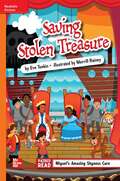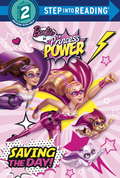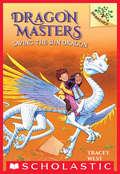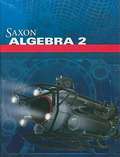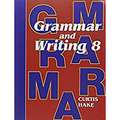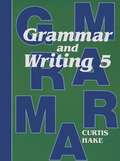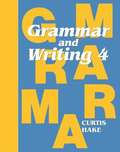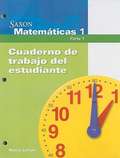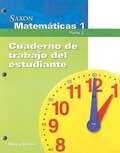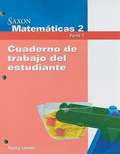- Table View
- List View
Saving the Day! (Barbie in Princess Power)
by Melissa LagonegroGirls ages 4 to 6 will love this Step 2 Deluxe Step into Reading Reader based on Barbie's latest film, releasing in spring 2015. This book features a sparkly cover and over 30 shimmery stickers!Step 2 Readers use basic vocabulary and short sentences to tell simple stories. For children who recognize familiar words and can sound out new words with help.
Saving the Sun Dragon: A Branches Book (Dragon Masters #2)
by Tracey WestDRAGON MASTERS has it all--dragons, Dragon Stones, a wizard, and even some magic!This series is part of Scholastic's early chapter book line called Branches, which is aimed at newly independent readers. With easy-to-read text, high-interest content, fast-paced plots, and illustrations on every page, these books will boost reading confidence and stamina. Branches books help readers grow! In the second book in this fully-illustrated series, Drake and the other three Dragon Masters (Ana, Rori, and Bo) continue their training. But Ana's dragon, Kepri, is sick. The wizard tries to make her feel better, but his potions are not working. Drake's dragon, Worm, must use his special powers to take the Dragon Masters across the world in search of a cure. What made Kepri sick? Will the Dragon Masters be able to save her? And what dangers will they face along the way?
Savitri's Story (Fountas & Pinnell Classroom, Guided Reading Grade 6)
by Amanda Hall Nancy WhiteA TERRIBLE SECRET Savitri can love no one but Satyavan. She has chosen him to be her husband, but before they marry, she learns a terrible secret about him. Should she change her mind? Or should she follow her heart? NIMAC-sourced textbook
Saxon Grammar & Writing 8: Student Workbook (Second Edition) (Grammar & Writing Ser.)
by Steck-Vaughn Company WorkbookStudent Textbook: Each lesson contains instruction with examples, a set of practice questions, and a review set, which includes previous material, Weekly dictations for practice in spelling and punctuation, Suggested journal topics for student journals. Student Workbook: Writing lessons introduce students to key elements of writing, from combining sentences to constructing essays to writing short stories. Lessons include examples, practice questions, and review questions. Additional practice for grammar lessons: Fun Silly Story activities. Teacher Packet: Answers for all practice sets, review sets, and writing lessons, Schedule (144 school days), Test masters, Test answers.
Saxon Grammar & Writing: Grade 8
by Christie Curtis Mary HakeWelcome to a language arts program designed for easy reading and instruction. This program consists of a series of daily lessons, review sets, and tests that are carefully sequenced to develop a variety of skills and concepts.
Saxon Grammar and Writing 7
by Christie Curtis Mary HakeWelcome to a language arts program devised for easy reading and instruction. This program consists of a series of daily lessons, review sets, and tests that are carefully sequenced to develop a variety of skills and concepts.
Saxon Grammar and Writing Grade 5
by Steck-Vaughn Company Hake CurtisThe Student Textbook contains lessons that instruct students on eight key grammar and usage concepts: Capitalization, Punctuation, Sentence Structure, Parts of Speech, Usage, Spelling Rules, Diagramming.
Saxon Grammar and Writing: Grade 4
by Christie Curtis Mary HakeThis Grade 4 Saxon's Grammar Student Textbook contains 111 lessons and is written directly to the student. Developed to follow the classic Saxon model of incremental development and continuous review, lessons instruct students on a basic skill before moving on to examples, practice exercises, and review sets. Providing instruction on key grammar and usage concepts with bolded vocabulary and thorough examples, writing exercises are also included to help guide students through composing a complete essay. Journaling and dictation exercises help hone different writing skills. Topics covered in this Grade 4 text include types of sentences, capitalization, subject and predicate, the predicate nominative, indirect objects, phrases and clauses, proper adjectives, appositives, progressive verbs, antecedents, and more. 605 pages, indexed, softcover.
Saxon Matemáticas 1, Cuaderno de trabajo del estudiante, Parte 1(Texas)
by Nancy LarsonNIMAC-sourced textbook
Saxon Matemáticas 1, Cuaderno de trabajo del estudiante, Parte 2 (Texas)
by Nancy LarsonNIMAC-sourced textbook
Saxon Matemáticas 2, Cuaderno de trabajo del estudiante, Parte 1(Texas)
by Nancy LarsonNIMAC-sourced textbook
Saxon Matemáticas 3, Cuaderno de trabajo del estudiante, Parte 1
by Nancy LarsonNIMAC-sourced textbook
Saxon Matemáticas 3, Cuaderno de trabajo del estudiante, Parte 2
by Nancy LarsonNIMAC-sourced textbook
Saxon Matemáticas K, Cuaderno de trabajo del estudiante, Parte 1
by Nancy LarsonNIMAC-sourced textbook
Saxon Matemáticas K, Cuaderno de trabajo del estudiante, Parte 2
by Nancy LarsonNIMAC-sourced textbook

